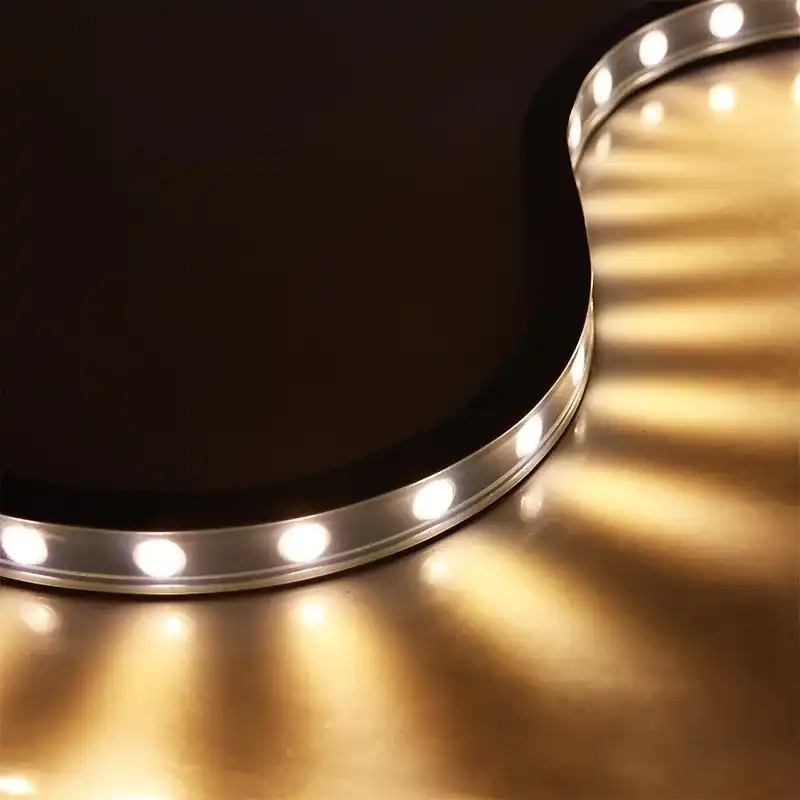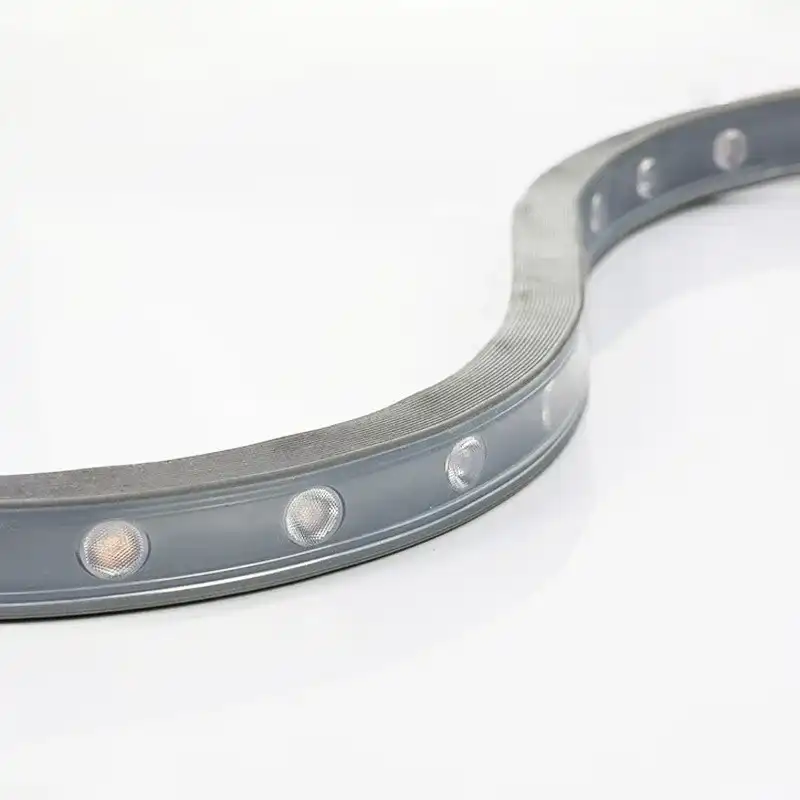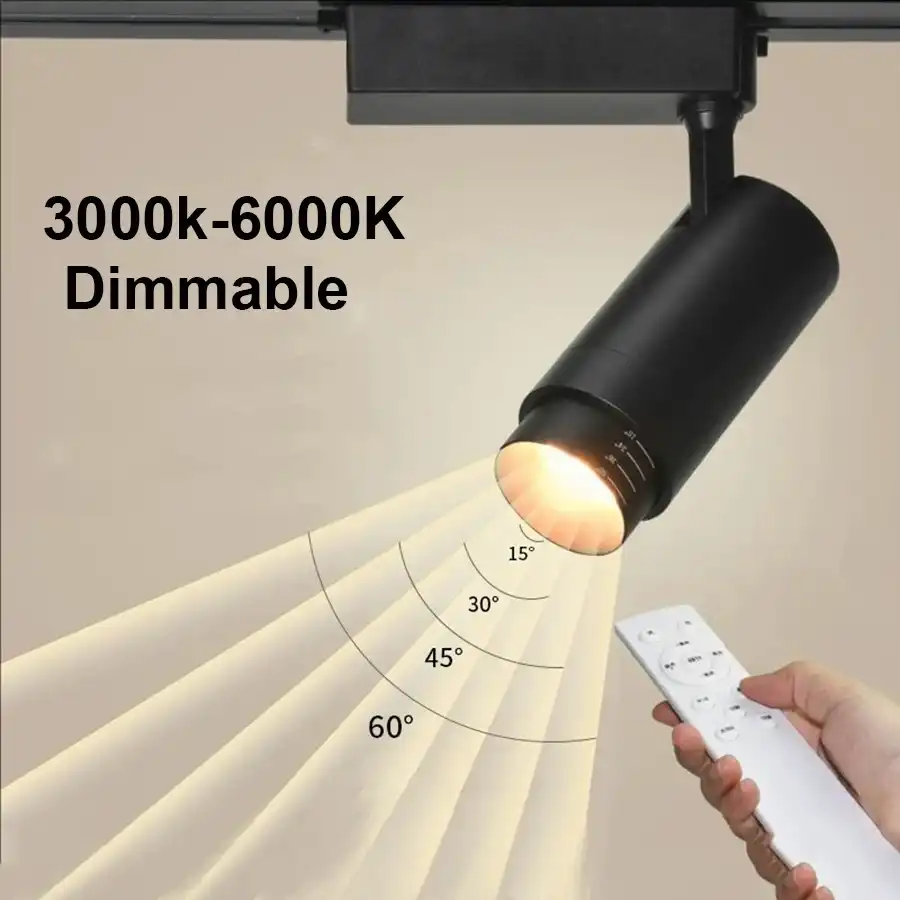The Evolution of Flexible Linear Lighting in Interior Design
The journey of flexible linear lighting from a niche product to a mainstream design element is a testament to its versatility and aesthetic appeal. Initially used primarily in commercial spaces, these lighting solutions have found their way into residential interiors, offering a perfect blend of form and function.
Historical Context and Technological Advancements
The concept of linear lighting isn't new, but the flexibility and efficiency brought by LED technology have propelled it to new heights. Early iterations were rigid and limited in application, but modern flexible linear lights can conform to various shapes and curves, opening up a world of creative possibilities.
Current Trends in Flexible Wall Lighting
Today's trends in flexible linear lighting for walls focus on seamless integration and multifunctionality. Designers are using these lights to create floating effects, highlight textures, and even as art installations. The trend towards minimalism has also boosted the popularity of hidden lighting solutions, where flexible linear lights are concealed within architectural elements.
Impact on Spatial Perception and Ambiance
One of the most significant impacts of flexible linear lighting is its ability to transform spatial perception. By accentuating wall contours or creating the illusion of height, these lighting solutions can make spaces appear larger and more dynamic. They also play a crucial role in setting the mood, with color-changing options allowing for instant ambiance shifts.
Innovative Applications and Design Techniques
The versatility of flexible linear lighting opens up a myriad of creative applications in wall design. Designers and architects are continually pushing the boundaries, finding new ways to incorporate these lighting elements into their projects.
Cove Lighting and Indirect Illumination
Cove lighting remains one of the most popular applications for flexible linear lights. By installing these lights in recessed areas near the ceiling or along wall edges, designers create a soft, diffused glow that adds depth and warmth to a room. This technique is particularly effective in spaces with high ceilings or in creating a cozy atmosphere in bedrooms and living areas.
Accent Lighting for Artwork and Architectural Features
Flexible linear lights excel in highlighting artwork and architectural details. Their ability to be installed in tight spaces and around corners makes them ideal for illuminating niches, emphasizing textures, or creating a halo effect around statement pieces. This targeted lighting approach not only enhances the visual appeal of the featured elements but also adds layers of interest to the overall space. Flexible Linear Lighting for Walls offers unmatched versatility for designers seeking both functional and aesthetic illumination solutions.
Dynamic and Interactive Wall Designs
Advancements in LED technology have paved the way for dynamic and interactive wall lighting designs. Programmable flexible linear lights can create moving patterns, respond to sound or movement, or change colors to suit different moods or occasions. These interactive elements transform walls from static surfaces into engaging, ever-changing canvases that captivate and inspire.

Best Practices for Implementation and Installation
While flexible linear lighting offers immense creative potential, proper implementation is key to achieving the desired effect. Following best practices ensures not only aesthetic success but also longevity and efficiency of the lighting system.
Planning and Design Considerations
Before installation, thorough planning is essential. Consider the primary purpose of the lighting – whether it's for ambient illumination, task lighting, or decorative effect. Factor in the room's architecture, existing décor, and natural light sources. It's also crucial to determine the desired brightness levels and color temperature, as these will significantly impact the space's atmosphere.
Technical Aspects of Installation
Proper installation is critical for the performance and longevity of flexible linear lighting. Ensure that the mounting surface is clean, dry, and even. Use appropriate adhesives or mounting clips as recommended by the manufacturer. Pay special attention to corners and curves, ensuring the light strip is not bent too sharply, which could damage the LEDs or affect light distribution. Flexible Linear Lighting for Walls ensures consistent illumination and durability when installed with precision and care.
Power Management and Control Systems
Efficient power management is crucial for LED linear lighting. Calculate the total power requirements and ensure your electrical system can handle the load. Incorporate dimmers and smart control systems to enhance functionality and energy efficiency. Modern control systems allow for precise adjustment of brightness and color, integration with home automation systems, and even control via smartphone apps.
Maintenance and Longevity Considerations
While LED lights are known for their long lifespan, proper maintenance can further extend their durability. Regular cleaning to remove dust and debris is essential, especially for lights installed in coves or recessed areas. Ensure proper ventilation to prevent overheating, and periodically check connections and power supplies for any signs of wear or damage.

Conclusion
Flexible Linear Lighting for Walls represents a significant leap forward in interior lighting design. Its versatility, energy efficiency, and aesthetic appeal make it an invaluable tool for designers and homeowners alike. By understanding the latest trends and adhering to best practices in implementation, one can harness the full potential of this innovative lighting solution to create stunning, dynamic spaces that captivate and inspire. As technology continues to evolve, we can expect even more exciting developments in flexible linear lighting, further expanding its applications and impact on interior design.
FAQ
What are the main advantages of using flexible linear lighting for walls?
Flexible linear lighting offers versatility in design, energy efficiency, and the ability to create unique lighting effects. It can enhance spatial perception, highlight architectural features, and provide both ambient and accent lighting.
How long do LED flexible linear lights typically last?
High-quality LED flexible linear lights can last up to 50,000 hours or more, depending on usage and maintenance. This translates to several years of operation under normal conditions.
Can flexible linear lighting be used outdoors?
Yes, there are outdoor-rated flexible linear lighting options available. These are designed to withstand various weather conditions and are ideal for exterior wall lighting, landscape features, and architectural accents.
Transform Your Space with USKYLED's Flexible Linear Lighting Solutions | USKYLED
USKYLED, a leading manufacturer of high-performance LED lighting solutions, offers cutting-edge flexible linear lighting for walls. Our products combine advanced LED technology with custom OEM/ODM solutions, ensuring superior quality and energy efficiency. Whether you're a distributor, contractor, or designer, USKYLED's flexible linear lighting factory can transform your projects with innovative, sustainable luminaires. Experience the difference with our expert lighting solutions. Contact us at sales@uskyled.com to elevate your lighting designs today.
References
1. Smith, J. (2023). "The Impact of Flexible Linear Lighting on Modern Interior Design". Architectural Lighting Quarterly, 45(2), 78-92.
2. Johnson, E. & Lee, S. (2022). "Energy Efficiency in Commercial Spaces: A Study of Flexible LED Lighting Systems". Journal of Sustainable Lighting, 17(3), 205-221.
3. Patel, R. (2023). "Innovations in Flexible Linear Lighting: Trends and Applications". Lighting Design & Technology, 31(4), 112-128.
4. Wong, L. et al. (2022). "User Experience and Wellbeing: The Effects of Dynamic Lighting in Work Environments". International Journal of Environmental Research and Public Health, 19(8), 4567.
5. Martinez, C. (2023). "Best Practices for Installing and Maintaining Flexible Linear Lighting Systems". Professional Electrician, 28(5), 45-52.



![What is Dimmable Track Lighting for Museum: Best Guide [2025]](/icms/upload/0d08cc601e7611f0b542b3ca0c0f4a83/pic/knowledgemanager-knowledgepic/e7879f32605f11f081911f363b8c1ed0/Directory/20250717 dimmable track lighting -1(1)_1752739217941.webp)

